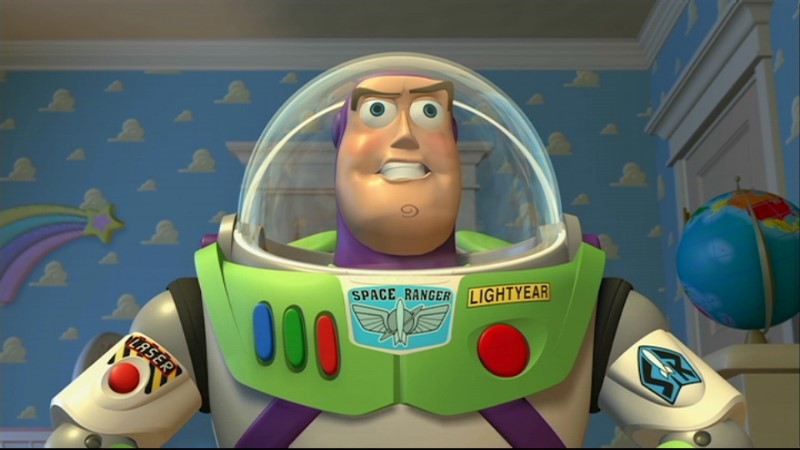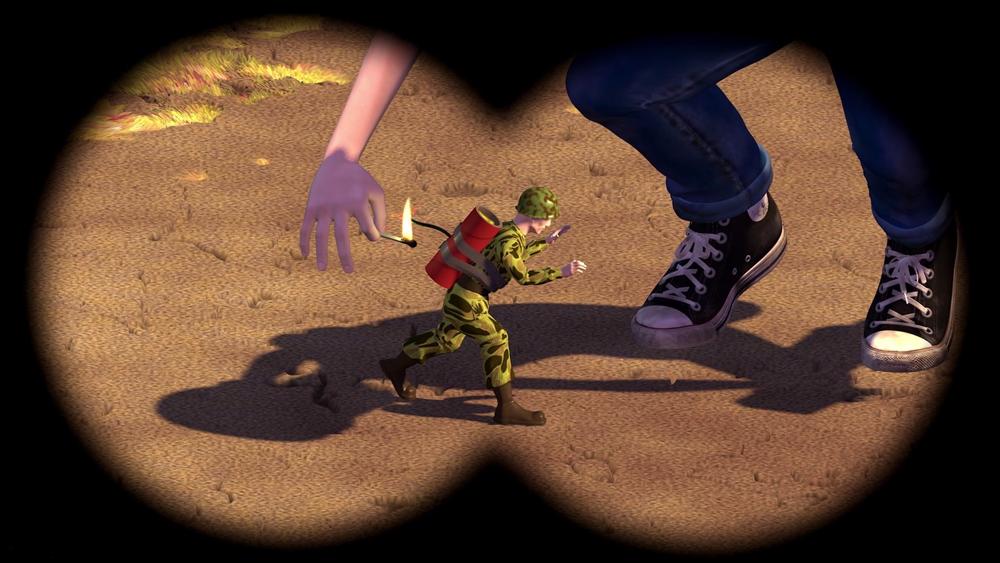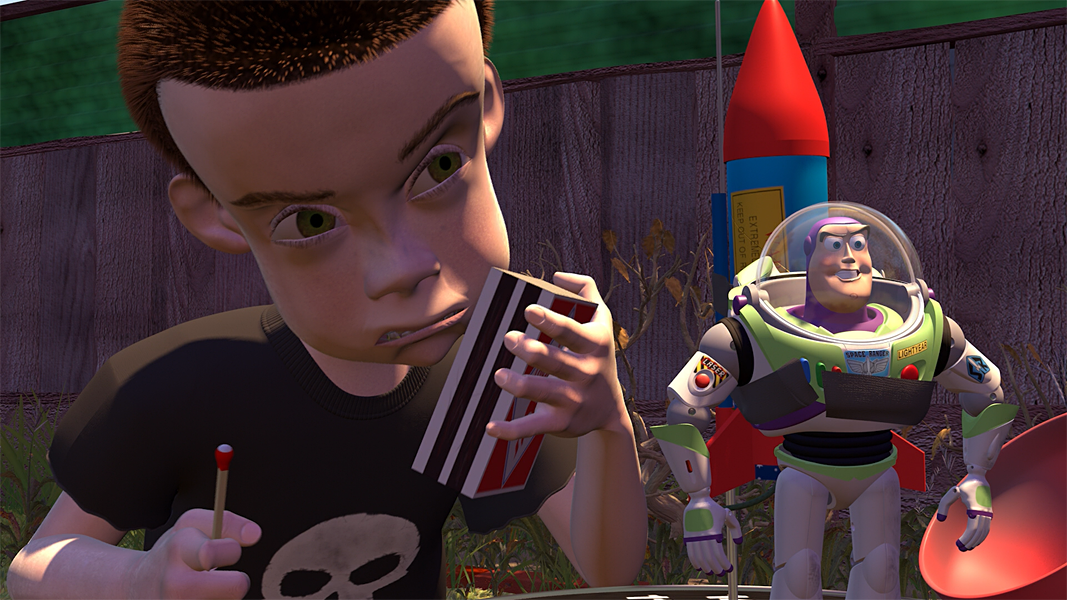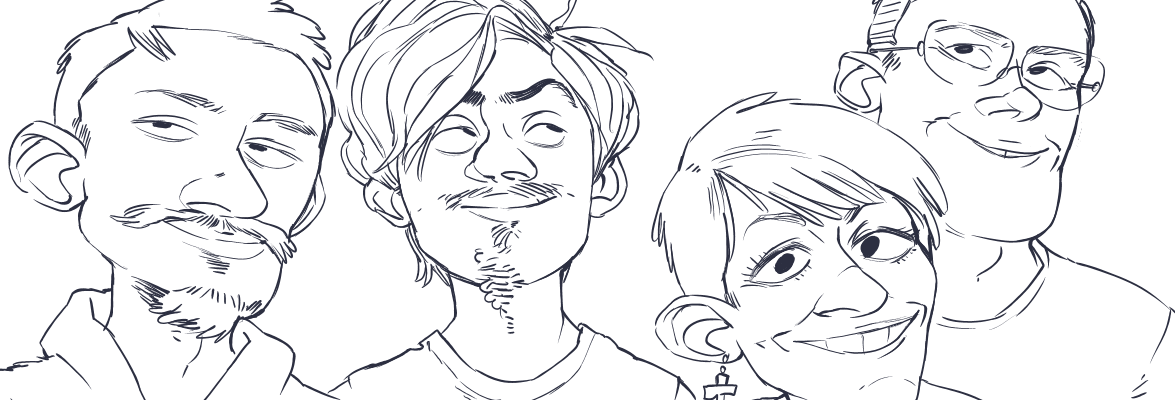 Yo.
Yo.
As you may already know, we here at Saint Carnival use a method of film analysis we call the Enneagram. Since this system is potentially difficult to understand — and I’ll probably need you to understand it if I have any hope of successfully employing it — I’m offering an example.
Hmm, what’s that? There’s already an example linked at the top of the blog? Very true. However, as excellently written as that particular review may be, it is inspecting a flawed movie with a flawed Enneagram. As I said, that makes for interesting reading, but I think it’s fair to supply you with what I consider an example of the Enneagram done right.
Of course, such an example would lack impact if it concerned an unpopular or obscure film, so after some deliberation I decided to use Toy Story, since everybody’s seen that. Or I certainly hope you have. If you haven’t . . . well, go watch it now. Or else dread the oncoming spoilers.
Now, let’s run this by the numbers, shall we?
1
The One is, with very few exceptions, the beginning of the movie. That might sound weird — shouldn’t it be a given that the first number corresponds with the first few minutes of the story? But it doesn’t. Not always. Just look at Star Wars. Actually, don’t. Not today, anyway.
We’re looking at Toy Story, which has a perfectly normal One that establishes most of the major characters and their relationships. It delivers a lot of information coupled with entertainment, just like any One should. This number isn’t hard to get right, really.
2
The Two — when the main conflict of the story is introduced — is the arrival of Buzz Lightyear.

“But Buzz isn’t the bad guy!” you complain, potentially with a squeaky baby voice.
No, he isn’t, but he is the catalyst of change — he shakes things up by introducing conflict among the toys and brews jealousy in Woody, our protagonist, even if he doesn’t intend to do so. He is the Problem, and the rest of the story is defined by the Problem.
3
The Three and the Six are always the most difficult moments to get right, partly because they’re the most difficult to define. Even the strongest Enneagram will probably have weak Threes and Sixes. Even when done right, what will often happen is the Three will be weak or inconsequential in service of the Six, which will reflect the Three with more strength.
This is exactly what happens in Toy Story: the Three moment occurs a short time after Buzz’s appearance and introduces us to Sid, the closest thing this movie has to a villain. What’s even more important here than Sid, though, is this:

Sid straps a toy to a kind of firecracker and kills him, which obviously horrifies the main characters. As I said earlier, this scene may not seem like much, but it’s the Three moment. If you’ve seen the film you’ve probably already guessed why, but in case you haven’t, I’ll explain more when we come to the Six. In the meantime . . .
4
The Four isn’t one moment, or even one scene, but a series of scenes. It tends to cover the majority of the movie’s running time, and it’s real point is to show how the main characters are dealing with problems established by the Two (and the Three, in many movies). This is often where the writers put the “filler” in “film,” and as a consequence this is sometimes the slowest or most boring part of a story.
Quite a lot happens in Toy Story’s Four, though: Woody knocks Buzz out a window, which gets them both stranded at a gas station, which gets them into Pizza Planet, which gets them into Sid’s house, which gets them royally screwed. It’s around this point that Woody and Buzz meet Sid’s menagerie of toys that he has tortured, broken and reassembled into zombies.
Throughout all of this Woody and Buzz have been at odds, and Buzz has been under the delusion that he is not a toy but a real, living astronaut. This changes with the Four-Five Switch.
Switch
The Switch is the moment in the movie where the heroes realize something important — perhaps something about themselves — and adjust their course in some way. The thrust of the story may be the same, but the characters are not. This is the point of transference between the Four stuff and the Five stuff.
In this case, Buzz comes to the realization that he is not what he believed himself to be when he tries and fails to fly out a window, which breaks his arm off, assuring him of his plasticity.
5
The Five is, of course, the second half of the story and a reflection of the Four in that there is less filler and more tension, and where the heroes were once uncooperative they are now working together.
Woody and Buzz do not immediately become friends or even willing allies, but because Buzz has lost his delusions they now have a better chance of finding common ground.
Their alliance is finally forged in “the jailbreak scene,” where Woody comforts Buzz and is, in turn, comforted. At this point they find they have the same goal: to escape Sid and return to Andy, their rightful owner, before he moves to another house.
6

But of course Sid has to come and strap Buzz to a rocket, an obvious mirror of the Three moment. Like I said before, this is one of those movies where the Three seems mostly inconsequential at the time, but is a setup for the Six, which serves the purpose of establishing a clean carpet for the Seven to stand.
7
The Choice. See, at this point in a movie the numbers just start lining themselves up for the sake of making a straight line to the end of the story. In the Six, Buzz is strapped to a rocket, so in the Seven Woody needs to save him and decides to “break a few rules” by revealing his own sapience (and the sapience of the zombie toys) to Sid.
The Seven is only hard to do right if the Six is mishandled — which, unfortunately, happens a lot. Even then, most Sevens work out half-decent. After all, they don’t need to be lengthy: the hero simply needs to decide to start the Eight.
8
The Climax. Very, very easy to write, shoot and understand. Sometimes the Climax lasts for a single scene and sometimes it covers the rest of the film. Toy Story follows the latter, when all of the characters, themes and decisions made prior come back to mingle in not one, but two exciting action sequences.
First, Woody and the zombies free Buzz and terrify Sid, neutralizing the villain of the film. Second, the two heroes rush to catch up with Andy and his moving-van in a final chase that goes all over the place — it’s filled with miniature chases, fights, moments of sacrifice, moments of doubt and a chill-sending flight into Andy’s convertible.
With all of the story’s conflicts resolved, all that’s left is . . .
9
The End.
Woody and Buzz are friends and Christmas morning has arrived, which for toys must be comparable to some kind of mass wedding/birthday/baptism.
Not all Nines are this short — just look at The Lord of the Rings — but since complete disaster has been averted with few-to-zero casualties, there’s little to say here other than confirm the heroes’ happiness.
So, there you go: the closest thing to a perfect Enneagram that I can find. It’s not dynamic, exactly, but at least it works, which is more than I can say for most of the movies I’ve seen.
Thanks for reading.

Permalink
Nicely done! How I do love to see a clear enneagram concisely described.